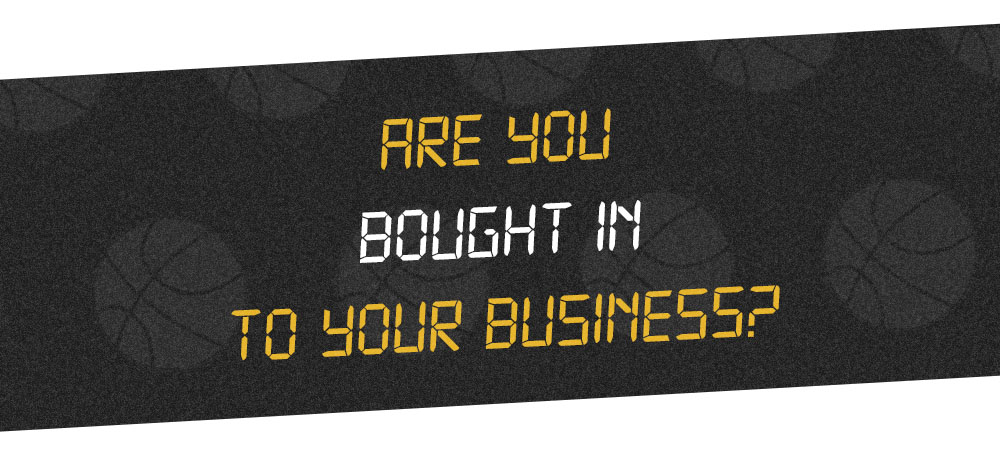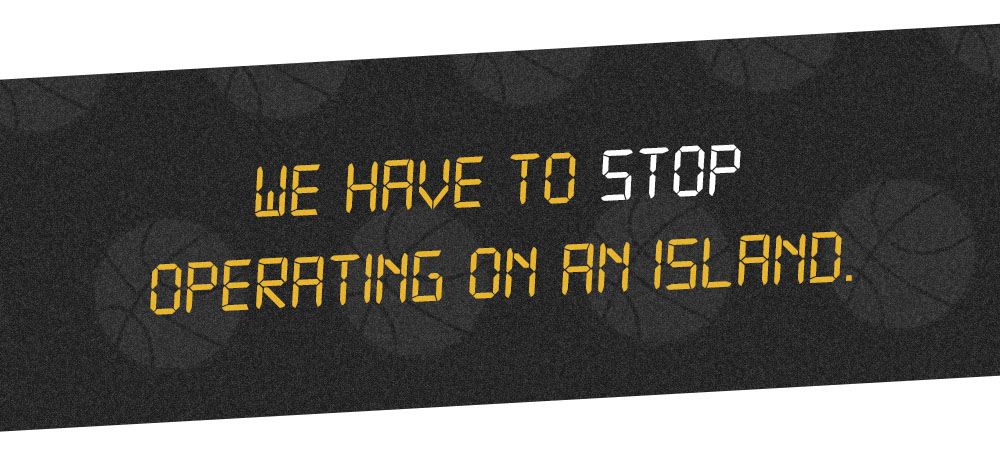I was just on my drive home from my son’s basketball game, and I could not wait to get in front of the camera because I have something amazing that I needed to share with you today.
My son just finished his last basketball game of the season.
He’s an “eight and under” player, and this season he played nine games as a part of the local YMCA league. All fun and dandy.
This season, his team scored a combined…
Wait for it…
…
16 points…
…
All season.
Yes, you heard me correctly. They scored a combined number of 16 total points for the entire season. It was absolutely devastating.
But 8-year-olds are resilient though. And 8-year-olds don’t really get pissed. But you know who does get pissed?
The parents. They were up in arms the whole time.
But truthfully, I’m just wondering what’s going on with the coach.
Because it starts at the top, and that’s what I want to focus on today.

If I had to describe this coach to you, he’s probably in his late 40s/early 50s. He’s got an 18-to-20-year-old son. He doesn’t have a child or relative on the team, and honestly, I don’t know what compelled him to coach.
In my experience, the coach is usually a dad who ends up coaching the son or daughter in that same league. But this guy? He had no tie to the team. And I’m wondering… maybe he was doing a community service obligation? I don’t know, but it didn’t end up real well.
So each week I asked myself:
“Is this guy bought in?”
Is this coach bought in to teaching a bunch of eight-year-olds?
And why would he want to coach a bunch of 8-year-olds, watch them get shellacked each week and come back and do it over and over and over again?
Truthfully, I’ve moved on. I’m over it. I’m over the basketball season. It is what it is. My eight year old son is all smiles. Everything is good.
BUT this whole idea of being bought in was top-of-mind for me on my drive home.
The big question is…

Are you bought in to your business?
Are you bought in to your position within the business?
Being bought in is a mindset.
There are some practical steps I’m going to describe to you. I’ll compare and contrast them with what my son’s coach was doing. We’ll then determine together if he was bought in.

Step 1: Solutions, Not Problems
So what does it really mean to be “bought in?”
For starters, being in a bought in mindset starts with being solution-focused.
Rather than piling on the problems in a given circumstance, we need to search for and find solutions.
In terms of the coach: I would describe him as a clipboard coach—always writing things down, always walking around, always smiling. But he didn’t have solutions for his team’s needs—or solutions that weren’t appropriate.
Dude.
When you’re down 20-to-nothing at halftime and you’re running through plays on your clipboard with a bunch of 7 and 8-year-olds that can’t dribble the ball… that’s not a solution.
Let’s flip this to your business and ask these questions:
- Are you bringing the appropriate solution(s) at the right time?
- Are you squashing out the drama?
- And are paying attention to what your team needs?

Step 2: Focus On The Fundamentals
Another example: My son still can’t do a bounce pass.
The whole season was nine games over twelve weeks, with a little bit of practice ahead of each game.
The fundamentals were taught, but the repetitive practice that you need in order to solidify understanding and skill were never actually drilled or prioritized.
Some of the other teams we played against?
They had a three pass minimum rule during games!
These are 8-year-olds!
They would pass it three times to each other before one of them was even allowed to shoot the ball into the hoop.
I mean… that’s rock solid fundamentals.
And here we are with our team. Our team maaaaayyybeee got the ball across the half court line…30 times all season?
Yeah… They could not get it past the half court line.
And remember: they only scored 16 points all season.
I think our team’s coach really dropped the ball when it came to drilling in the fundamentals. He wasn’t bought in.

Step 3: No Task Is Too Small
Is anybody in your business, “big timing” anyone else?
And I’m specifically talking about you/the leader/owner/founder.
Is cleaning kegs too big for you? Is doing a ride along too big for you? Is helping out on a brew deck too big for you?
These are all things we need to be thinking about to ourselves saying, “For us to have a bought in mentality, nothing is too big for the founder.”
No task is too small.
We’ve got to roll up our sleeves and get in there!
There was a period where we were growing exponentially and we didn’t have to do the “smaller” tasks, but that’s not the case anymore. We’ve got to block and tackle at the lowest common denominator to help and encourage our team.
Imagine if you spent 8 hours with a sales rep and they were able to hear your lingo in talking to accounts and distributors! You have a cadence, you have a tone, you have a volume that is going to rub off on the sales rep and they can begin to understand what you expect, but also come to really digest the needs of the brewery and their role.

Step 4: Ask For Help
One final thing.
By about the fifth game of the season, I was hoping this coach was going to get together with some parents or with a colleague and just ask, “What am I doing wrong?”
He was coaching on an island.
He and his son would show up with the biggest grins on their faces to practice and games. And I was so confused. I even thought to myself, “Maybe I’m being a Florida sports parent about this.”
You hear about the Florida sports parents that get all crazy and fight the refs, right?
I am not that guy!
Regardless, the coach was doing it all alone.
He didn’t reach out for help. He didn’t ask parents. Or even his coach colleagues.
How does this apply to your business?

We have to stop operating on an island.
I am asking you now to please get together with two other owners in your vertical (beer, ciders, spirits) and just chat once a month.
I want you to share your successes. I want you to share your challenges. I want you to bring questions to them. We need to lean on each other’s experience to keep the business moving forward.
If you need help coming up with the format or agenda for these meetings, send me an email and I will respond with something that I think you can use.
And after these meetings I want you to take this information back to your team. You may not be able to divulge everything because there’s going to be some confidentiality between owners.
But if you bring information back to your team, they are going to know that you’re bought in.

Quick recap.
Being bought in is about:
- Being solution-focused.
- Focusing on the fundamentals.
- Blocking and tackling at the lowest level. No big timing.
- Stop operating on an island.
If you’re not bought in, you need to get bought in. And like I said, if you’re serious about this and need ideas, hit “reply” and send me an email at chris@sbstandard.com.
I’ll reply with the helpful, tough love I should have given to my son’s coach. Hope to hear from you soon!
– cf